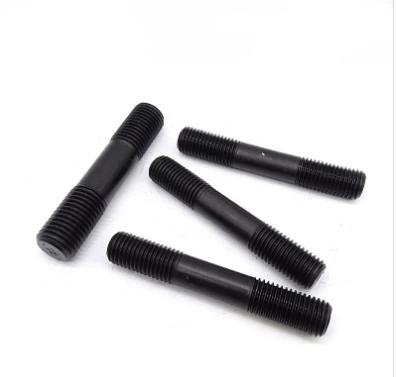

Durable Galvanized Steel Threaded Rod for Various Construction Applications
Nov . 04, 2024 19:02 Back to list
Durable Galvanized Steel Threaded Rod for Various Construction Applications
Understanding Galvanized Steel Threaded Rods Features, Benefits, and Applications
Galvanized steel threaded rods are essential components in various construction, manufacturing, and engineering applications. They are characterized by their high tensile strength, excellent corrosion resistance, and versatility in fastening and support systems. This article will explore the features, benefits, and applications of galvanized steel threaded rods, highlighting their importance in modern industry.
What is a Galvanized Steel Threaded Rod?
A galvanized steel threaded rod is a long, straight metal rod with threads along its entire length. The galvanized aspect refers to the process of applying a protective coating of zinc to the steel. This coating acts as a barrier against corrosion caused by moisture and environmental factors. The threaded design allows for easy fastening, making these rods a popular choice for a variety of applications.
Features of Galvanized Steel Threaded Rods
1. Material Composition Galvanized steel threaded rods are typically made from high-strength steel, providing them with superior tensile strength and durability. The zinc coating enhances the rod's resistance to rust and corrosion.
2. Threading The complete threading on the rod allows for enhanced grip and tight fastening, making them ideal for applications that require secure connections.
3. Sizes and Lengths These rods are available in a variety of diameters and lengths, making them suitable for a diverse range of projects, from small repairs to large construction jobs.
4. Surface Finish The smooth surface of galvanized steel rods is not only aesthetically pleasing but also ensures ease in installation and handling.
Benefits of Using Galvanized Steel Threaded Rods
1. Corrosion Resistance The zinc coating provides exceptional protection against rust and corrosion, extending the lifespan of the threaded rods. This makes them suitable for outdoor applications, marine environments, and areas exposed to moisture.
galvanized steel threaded rod

2. Strength and Durability High-strength steel construction offers significant load-bearing capacities, making these rods ideal for heavy-duty applications.
3. Cost-Effectiveness While galvanized steel threaded rods may have a higher initial cost compared to standard steel rods, their longevity and reduced maintenance needs often result in lower overall costs over time.
4. Versatility These threaded rods can be used in a wide range of applications, including construction, fastening, and support systems in various industries.
5. Ease of Use The standardized threading ensures compatibility with a variety of nuts and washers, allowing for quick and easy assembly in any project.
Applications of Galvanized Steel Threaded Rods
1. Construction Galvanized steel threaded rods are widely used in construction projects for anchoring and securing structural elements. They can be found in building frameworks, bridges, and heavy machinery installations.
2. Manufacturing In the manufacturing industry, these rods are employed for assembly purposes, offering reliable fastening solutions for machinery and equipment.
3. Infrastructure Threaded rods are crucial in infrastructure projects such as highways, railways, and bridges where they provide stability and structural integrity.
4. HVAC and Plumbing Galvanized steel threaded rods are often used in HVAC (heating, ventilation, and air conditioning) systems and plumbing to secure ducts, pipes, and other equipment.
5. Marine Applications Due to their corrosion-resistant properties, galvanized threaded rods are suitable for marine applications, including boat construction and dock fixtures.
In conclusion, galvanized steel threaded rods are indispensable components across various industries. Their unique properties, such as corrosion resistance, strength, and versatility, make them a preferred choice for many applications. Whether in construction, manufacturing, or infrastructure, these rods provide reliable performance and long-lasting durability, proving their value in a wide range of projects. Their combination of efficiency and effectiveness highlights why they remain a fundamental part of modern engineering and construction practices.
Latest news
-
High-Strength Hot Dip Galvanized Bolts - Hebei Longze | Corrosion Resistance, Customization
NewsJul.30,2025
-
Hot Dip Galvanized Bolts-Hebei Longze|Corrosion Resistance&High Strength
NewsJul.30,2025
-
High-Strength Hot-Dip Galvanized Bolts-Hebei Longze|Corrosion Resistance&High Strength
NewsJul.30,2025
-
Hot Dip Galvanized Bolts-Hebei Longze|Corrosion Resistance&High Strength
NewsJul.30,2025
-
Hot Dip Galvanized Bolts - Hebei Longze | Corrosion Resistance, High Strength
NewsJul.30,2025
-
High-Strength Hot Dip Galvanized Bolts-Hebei Longze|Corrosion Resistance, Grade 8.8
NewsJul.30,2025

